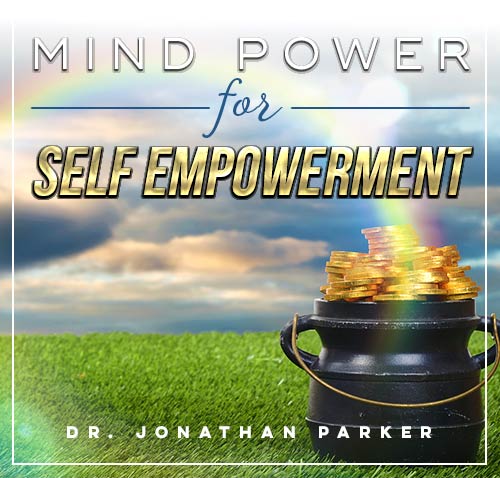Brain Wave Frequencies and Sleep Cycles: What to Know

Looking for more amazing products? Check out our online store and explore our collection here! Happy shopping!
Before diving in, please note: This post is for informational purposes only. If you’d like to know more about how we approach topics, feel free to check out our friendly Disclaimer Page.
Hey there, amazing readers! 
We’re committed to delivering quality posts, and your support (even just sticking around despite the ads) means everything to us. So, bear with us, and thanks for helping us keep the good vibes rolling. Now, on to the fun stuff!
TRANSLATE BUTTON AT THE END OF THE ARTICLE
Understanding Brain Wave Frequencies
Brain wave frequencies refer to the electrical activity that can be measured in the brain through different wave patterns.
These frequencies are categorized into four main types: Beta, Alpha, Theta, and Delta waves.
Each wave type corresponds to different states of consciousness and plays a crucial role in our sleep cycles and overall brain function.
Understanding these frequencies can provide insight into how our brains work during various activities, including sleep.
Brain waves are measured in Hertz (Hz), which represents the number of cycles per second that a wave completes.
Beta waves, for example, have a frequency range of 12-30 Hz and are associated with our waking state when we are alert and focused.
On the other end of the spectrum, Delta waves have the slowest frequency range of 0.5-4 Hz and are linked to deep, restorative sleep.
By monitoring these frequencies, researchers can gain a deeper understanding of how our brains function during different stages of consciousness.
The complexity of brain wave frequencies lies in their ability to fluctuate throughout the day based on our activities and mental states.
For instance, Beta waves are dominant when we are engaged in tasks that require focus and concentration, while Theta waves increase during moments of relaxation or light sleep.
These dynamic changes in brain wave patterns highlight the intricate connection between our mental states and the electrical activity in our brains.
The Different Sleep Cycles
Sleep is divided into several stages that make up a complete sleep cycle.
These stages include NREM (Non-Rapid Eye Movement) sleep and REM (Rapid Eye Movement) sleep, each characterized by distinct brain wave patterns and physiological changes.
NREM sleep is further divided into three stages: N1, N2, and N3, while REM sleep occurs cyclically throughout the night.
Understanding these sleep cycles is essential for optimizing our restorative sleep and overall well-being.
During NREM sleep, our brain transitions through the different stages, with each stage marked by specific brain wave frequencies and physiological changes.
N1 is the lightest stage of sleep, where we may experience drifting in and out of consciousness.
N2 is a slightly deeper stage, characterized by the presence of sleep spindles and K-complexes in the brain wave patterns.
N3, also known as slow-wave sleep, is the deepest stage where Delta waves dominate, and our bodies undergo restorative processes.
REM sleep, on the other hand, is when most of our dreaming occurs and is associated with heightened brain activity and rapid eye movements.
During this stage, our brain waves resemble those of wakefulness, with a mix of Beta and Alpha waves.
REM sleep plays a crucial role in memory consolidation, emotional processing, and overall cognitive function.
The alternating cycles of NREM and REM sleep throughout the night ensure that we experience a balanced and restful sleep.
Importance of Brain Waves in Sleep
Brain waves play a significant role in regulating our sleep cycles and overall sleep quality.
The different frequencies of brain waves during sleep help orchestrate the transition between the various stages of sleep, from light sleep to deep sleep and REM sleep.
By understanding how these brain waves influence our sleep, we can make adjustments to improve our sleep patterns and overall well-being.
Beta waves, which are associated with wakefulness and alertness, gradually give way to Alpha waves as we relax and prepare for sleep.
Theta waves then emerge during light sleep, signaling a transition into deeper stages of restorative sleep.
Delta waves dominate during deep sleep, facilitating the body’s healing and repair processes.
REM sleep, with its unique brain wave patterns, allows for memory consolidation and emotional processing.
Ensuring that our brain waves follow a healthy pattern during sleep is crucial for waking up feeling refreshed and rejuvenated.
Disturbances in these brain wave frequencies can lead to sleep disorders such as insomnia, sleep apnea, and restless legs syndrome.
By monitoring and optimizing our brain waves during sleep, we can promote better sleep quality and overall cognitive function during the day.
Beta Waves and Wakefulness
Beta waves are high-frequency brain waves that are associated with our waking state when we are alert, focused, and engaged in mental activities.
These waves have a frequency range of 12-30 Hz and are characterized by fast, rhythmic patterns in the brain.
Beta waves are essential for cognitive functions such as problem-solving, decision-making, and critical thinking.
When we are awake and actively participating in tasks that require concentration, Beta waves dominate our brain activity.
These waves help us stay alert, process information quickly, and respond to external stimuli.
However, an excess of Beta waves, especially during times of stress or anxiety, can lead to feelings of restlessness and overwhelm.
Learning to regulate Beta wave activity can help improve focus and productivity during waking hours.
Engaging in activities that promote relaxation, such as meditation, deep breathing exercises, or mindfulness practices, can help reduce Beta wave activity and transition the brain into Alpha wave patterns.
By balancing Beta wave dominance with periods of relaxation, we can enhance our overall well-being and cognitive performance throughout the day.
Understanding the role of Beta waves in wakefulness is key to optimizing our mental clarity and focus.
Alpha Waves and Relaxation
Alpha waves are medium-frequency brain waves that occur when we are in a relaxed and calm state of mind.
These waves have a frequency range of 8-12 Hz and are associated with a sense of inner peace, creativity, and mindfulness.
Alpha waves are prominent during periods of relaxation, meditation, and light sleep.
When we transition from a state of wakefulness to relaxation, our brain activity shifts from Beta waves to Alpha waves.
This transition signals a decrease in mental activity and an increase in relaxation and receptivity.
Alpha waves are crucial for reducing stress, improving focus, and enhancing creativity.
By accessing the Alpha state through relaxation techniques, we can promote a sense of well-being and mental clarity.
Practicing mindfulness, deep breathing, or visualization exercises can help stimulate Alpha wave production in the brain.
By intentionally engaging in activities that promote relaxation and calmness, we can train our brains to access the Alpha state more easily.
Cultivating Alpha waves can have a profound impact on our overall mental health and emotional well-being, making it an essential component of a balanced lifestyle.
Theta Waves in Light Sleep
Theta waves are slow-frequency brain waves that occur during light sleep, meditation, and deep relaxation.
These waves have a frequency range of 4-8 Hz and are associated with creativity, intuition, and deep subconscious processing.
Theta waves are crucial for transitioning from wakefulness to the deeper stages of sleep.
As we drift from wakefulness to sleep, our brain activity slows down, and Theta waves begin to emerge.
These waves signify a state of deep relaxation, where the mind is open to new ideas, insights, and creative inspiration.
Theta waves play a vital role in processing emotions, memories, and subconscious thoughts during sleep, making them essential for overall cognitive function.
By accessing the Theta state through meditation, visualization, or hypnosis, we can tap into our inner creativity and intuition.
Theta waves are also associated with enhanced problem-solving abilities and increased cognitive flexibility.
Cultivating Theta waves during light sleep can lead to a deeper sense of self-awareness and emotional healing, making it a valuable tool for personal growth and development.
Delta Waves in Deep Sleep
Delta waves are the slowest-frequency brain waves that occur during deep, restorative sleep.
These waves have a frequency range of 0.5-4 Hz and are associated with physical healing, immune function, and memory consolidation.
Delta waves play a crucial role in the body’s repair processes during sleep.
When we enter the deepest stages of sleep, Delta waves dominate our brain activity, signaling a state of profound relaxation and restoration.
During this stage, our bodies undergo essential healing processes, such as tissue repair, hormone regulation, and immune system maintenance.
Delta waves are vital for promoting overall physical health and well-being.
Ensuring that we spend an adequate amount of time in deep sleep, where Delta waves are prevalent, is essential for waking up feeling refreshed and energized.
Factors such as stress, poor sleep habits, and sleep disorders can disrupt Delta wave production and lead to feelings of fatigue and cognitive impairment.
By prioritizing deep, restorative sleep, we can optimize our Delta wave activity and support our body’s natural healing processes.
REM Sleep and Brain Activity
REM (Rapid Eye Movement) sleep is a unique stage of sleep characterized by heightened brain activity, rapid eye movements, and vivid dreaming.
During REM sleep, our brain wave patterns resemble those of wakefulness, with a mix of Beta and Alpha waves.
This stage plays a crucial role in memory consolidation, emotional processing, and overall cognitive function.
REM sleep occurs cyclically throughout the night, with each REM cycle becoming longer and more intense as the night progresses.
This stage is essential for processing emotional experiences, integrating new information, and forming memories.
REM sleep is also associated with creative problem-solving and learning consolidation, making it a vital component of a healthy sleep cycle.
Disruptions in REM sleep can lead to cognitive deficits, mood disturbances, and memory problems.
Factors such as sleep disorders, medications, or lifestyle habits can affect the quality and duration of REM sleep.
By prioritizing restful sleep and creating a sleep-conducive environment, we can support healthy REM sleep patterns and enhance our overall cognitive function during the day.
Brain Wave Patterns During Sleep
During sleep, our brain transitions through different stages of consciousness, each characterized by specific brain wave patterns and physiological changes.
The brain wave patterns observed during sleep are crucial for understanding the depth and quality of our restorative rest.
By monitoring these patterns, researchers can gain insights into how our brains function during sleep and how we can optimize our sleep patterns for better health.
Beta waves gradually give way to Alpha waves as we relax and prepare for sleep, signaling a shift from wakefulness to relaxation.
Theta waves emerge during light sleep, facilitating a transition into deeper stages of restorative sleep.
Delta waves dominate during deep sleep, promoting physical healing and cognitive restoration.
REM sleep is characterized by a mix of Beta and Alpha waves, facilitating memory consolidation and emotional processing.
Understanding the nuances of brain wave patterns during sleep can help us identify potential sleep disturbances and make adjustments to improve our sleep quality.
Factors such as stress, lifestyle habits, and sleep disorders can impact the balance of brain wave frequencies during sleep.
By cultivating healthy sleep habits and prioritizing restful sleep, we can optimize our brain wave patterns and support overall cognitive function and well-being.
Sleep Stages and Brain Waves
Sleep is divided into several stages that make up a complete sleep cycle, each characterized by specific brain wave patterns and physiological changes.
NREM (Non-Rapid Eye Movement) sleep consists of three stages: N1, N2, and N3, with each stage marked by distinct brain wave frequencies and sleep depth.
REM (Rapid Eye Movement) sleep occurs cyclically throughout the night, with unique brain wave patterns associated with heightened brain activity and dreaming.
N1 is the lightest stage of sleep, where we may experience drifting in and out of consciousness, and Theta waves begin to emerge.
N2 is a slightly deeper stage, characterized by sleep spindles and K-complexes in the brain wave patterns.
N3, also known as slow-wave sleep, is the deepest stage where Delta waves dominate, promoting physical healing and cognitive restoration.
REM sleep is when most of our dreaming occurs, with a mix of Beta and Alpha waves facilitating memory consolidation and emotional processing.
Monitoring sleep stages and brain wave patterns can provide valuable insights into the quality and duration of our sleep.
By tracking these patterns over time, we can identify trends and potential disturbances that may impact our overall well-being.
Creating a sleep-friendly environment and establishing healthy sleep habits can help optimize our sleep stages and brain wave patterns for better restorative rest.
How to Improve Sleep Quality
Improving sleep quality involves adopting healthy sleep habits and creating a sleep-conducive environment that promotes restful rest.
Factors such as stress, lifestyle habits, and sleep disorders can impact the duration and quality of our sleep.
By implementing the following tips, you can enhance your sleep quality and overall well-being:
Establish a consistent sleep schedule by going to bed and waking up at the same time each day.
Create a relaxing bedtime routine that includes activities such as reading, meditation, or gentle stretching.
Ensure your sleep environment is comfortable, cool, dark, and quiet to promote restful sleep.
Limit exposure to screens and artificial light before bedtime to support natural sleep-wake cycles.
Avoid caffeine, alcohol, and heavy meals close to bedtime, as they can disrupt sleep patterns.
Stay physically active during the day to promote restful sleep and reduce feelings of fatigue.
Practice stress-reducing techniques such as deep breathing, mindfulness, or journaling to calm the mind before sleep.
Invest in a comfortable mattress and pillows that support your preferred sleep position and promote spinal alignment.
Limit naps during the day to avoid disrupting your natural sleep-wake cycle.
Consult a healthcare provider if you experience persistent sleep disturbances or symptoms of sleep disorders.
By incorporating these strategies into your daily routine, you can improve your sleep quality and overall well-being.
Prioritizing restful sleep is essential for cognitive function, emotional health, and physical well-being.
By optimizing your sleep habits and creating a sleep-conducive environment, you can support healthy brain wave patterns and enhance your overall sleep quality.
Monitoring Brain Waves During Sleep
Monitoring brain waves during sleep can provide valuable insights into the quality and depth of our restorative rest.
Advances in technology have made it possible to track brain wave activity through devices such as EEG (Electroencephalography) monitors and sleep trackers.
These tools can help individuals understand their sleep patterns, identify potential disturbances, and make adjustments to improve sleep quality.
EEG monitors measure electrical activity in the brain by detecting brain wave frequencies during sleep.
By analyzing these patterns, researchers can determine the stages of sleep a person is experiencing and the quality of their rest.
Sleep trackers, such as wearable devices or smartphone apps, can provide real-time data on sleep duration, sleep stages, and sleep efficiency, allowing individuals to track their sleep patterns over time.
Monitoring brain waves during sleep can help individuals identify factors that may be affecting their sleep quality, such as stress, lifestyle habits, or environmental factors.
By tracking sleep patterns and making adjustments based on this data, individuals can optimize their sleep quality and overall well-being.
Understanding the role of brain waves in sleep is key to improving restorative rest and promoting healthy cognitive function during the day.
Conclusion: Brain Waves and Restful Sleep
In conclusion, brain wave frequencies play a crucial role in regulating our sleep cycles and overall cognitive function.
Understanding the different types of brain waves, such as Beta, Alpha, Theta, and Delta waves, can provide valuable insights into how our brains function during various states of consciousness, including sleep.
By monitoring brain wave patterns during sleep, researchers can gain a deeper understanding of sleep cycles and make adjustments to improve sleep quality.
Beta waves are associated with wakefulness and alertness, while Alpha waves promote relaxation and calmness.
Theta waves occur during light sleep and facilitate transitions into deeper stages of restorative rest, while Delta waves dominate during deep sleep, promoting physical healing and cognitive restoration.
REM sleep is characterized by heightened brain activity and rapid eye movements, facilitating memory consolidation and emotional processing.
Improving sleep quality involves adopting healthy sleep habits, creating a sleep-conducive environment, and monitoring brain wave patterns during sleep.
By prioritizing restful sleep and optimizing brain wave frequencies, individuals can enhance their overall well-being and cognitive function.
Cultivating a deeper understanding of brain waves and sleep cycles can lead to better sleep quality, improved cognitive performance, and enhanced emotional well-being.
Prioritizing restful sleep is essential for supporting healthy brain function and overall well-being.

The Enlightenment Journey is a remarkable collection of writings authored by a distinguished group of experts in the fields of spirituality, new age, and esoteric knowledge.
This anthology features a diverse assembly of well-experienced authors who bring their profound insights and credible perspectives to the forefront.
Each contributor possesses a wealth of knowledge and wisdom, making them authorities in their respective domains.
Together, they offer readers a transformative journey into the realms of spiritual growth, self-discovery, and esoteric enlightenment.
The Enlightenment Journey is a testament to the collective expertise of these luminaries, providing readers with a rich tapestry of ideas and information to illuminate their spiritual path.
Our Diverse Expertise
While our primary focus is on spirituality and esotericism, we are equally passionate about exploring a wide range of other topics and niches 

To ensure we provide the most accurate and valuable insights, we collaborate with trusted experts in their respective domains 
Our blog originally focused on spirituality and metaphysics, but we’ve since expanded to cover a wide range of niches. Don’t worry—we continue to publish a lot of articles on spirituality! Frequently visit our blog to explore our diverse content and stay tuned for more insightful reads.
Hey there, amazing reader! 
Check out our store here and take a peek at some of our featured products below! Thanks for being awesome!












